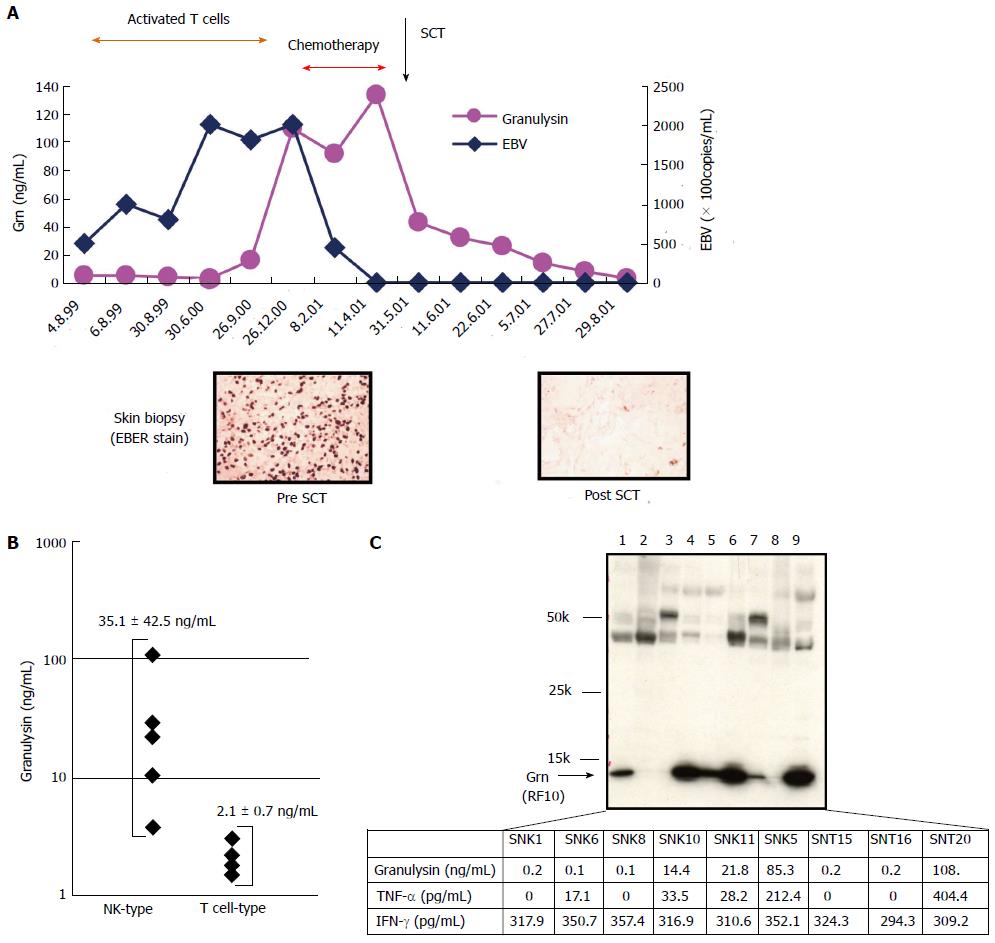Copyright
©2014 Baishideng Publishing Group Inc.
World J Hematol. Nov 6, 2014; 3(4): 128-137
Published online Nov 6, 2014. doi: 10.5315/wjh.v3.i4.128
Published online Nov 6, 2014. doi: 10.5315/wjh.v3.i4.128
Figure 6 Serum granulysin.
A: Clinical course and trend of serum granulysin in a natural killer (NK) cell type chronic active EB virus infection (CAEBV) patient. For detailed explanation, see GRANULYSIN AS A BIOMARKER, 6: Granulysin in NK cell-related tumors or neoplasm in the text; B: Serum granulysin in patients with NK type and T cell type CAEBV, serum granulysin in patients with NK type (n = 5) and T cell type (n = 4) chronic active EB virus infection. Only in NK type CAEBV, serum granulysin is significantly elevated. Serum granulysin in patients with NK type (n = 5) and T cell type (n = 4) chronic active EB virus infection. Only in NK type CAEBV, serum granulysin is significantly elevated. C: Expression of granulysin and cytokine production in EB virus infected cell lines (SNK1,5,6,10,11: NK cell type, SNT8,15,16,20: γδT cell type). Western blotting was performed by using a monoclonal antibody, RF10 which reacts with 15-kDa but not 9-kDa granulysin. TNF-a and IFN-g in the culture supernatant were assayed by ELISA method. TNE: Tumor necrosis factor; INF: Interferon.
- Citation: Nagasawa M, Ogawa K, Nagata K, Shimizu N. Granulysin and its clinical significance as a biomarker of immune response and NK cell related neoplasms. World J Hematol 2014; 3(4): 128-137
- URL: https://www.wjgnet.com/2218-6204/full/v3/i4/128.htm
- DOI: https://dx.doi.org/10.5315/wjh.v3.i4.128









